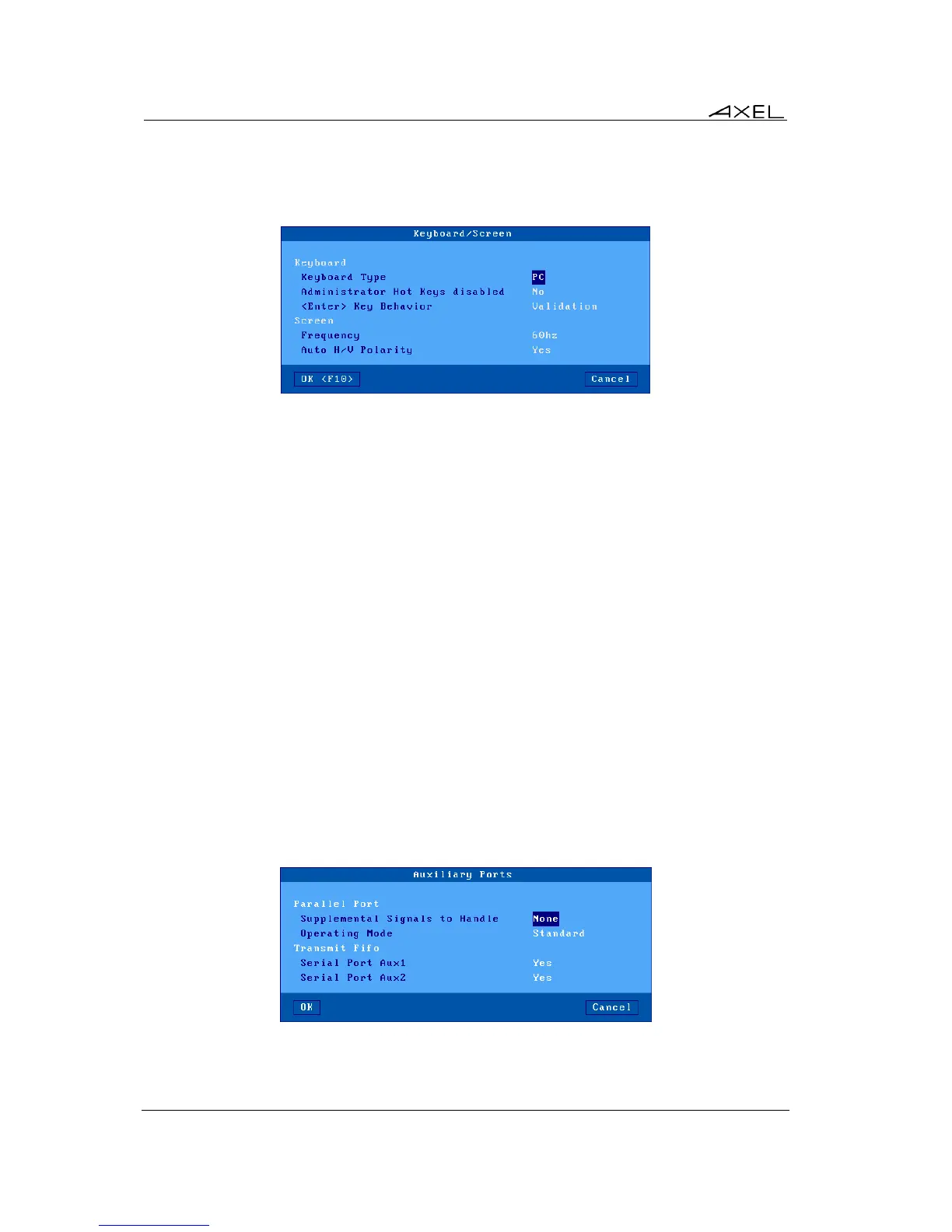Appendix
200 AX3000 Models 80 and 85 - User's Manual
'Window' and 'mss' Size: these values are used for tuning the TCP socket of the XML
administration protocol.
b) Keyboard/Screen Menu
Keyboard Type: by default PC keyboards (102/105 keys) are supported by the AX3000, but other
keyboards type are available for special use:
- AS400 (F24): 122-keys keyboard (24 function keys) for 5250 emulation,
- ANSI (F20): keyboard with 20 function keys for VT220 emulation.
Note: Do not experiment with keyboard types – i.e. if you do not have an AS400 keyboard do not
select AS400
Administrator Hot-Keys disabled: this parameter allows certain AX3000 hot-keys to be disabled,
possibly useful if the thin client is installed in public places. For example, this prevents a user from
invoking <Ctrl><Alt><Del> function. For more information, see Chapter 4.10.
Note: when this parameter is set to 'yes', the "consultation mode" and the "super password" don't
allow the set-up to be entered.
<Enter> Key Behavior: this option allows the <Enter> key mode to be set. This mode is used with
when a logon box is displayed and managed by the thin client:
- Validation: pressing <Enter> performs the same action as clicking the [OK] button,
- Browsing: pressing <Enter> jump to the next field.
Frequency: by default the Frequency is set to 60Hz. An alternate value is available: 75Hz.
Auto H/V Polarity: by default, the horizontal & vertical sync polarities for the 'recommended'
resolution are detected when the thin client is powered on (EDID protocol). This can be disabled
and 'hard-coded' values are used.
c) Auxiliary Ports Menu
Supplemental Signals to Handle: the AX3000 checks the printer status by reading both the
"Busy" and "Select-In" signals before printing. The AX3000 will not transmit data for printing if the
